Thinking About an Eyebrow Piercing? Here’s What You Actually Need to Know
In all my time as a professional piercer, I’ve seen trends come and go, but the eyebrow piercing? It’s a true classic. There’s just something about the way it can frame your face and draw attention to your eyes without being too over-the-top. When it’s done right, it’s fantastic. But I’ve learned that a great eyebrow piercing has nothing to do with luck. It’s all about understanding the body, using the right technique, and—this part is on you—committing to proper aftercare.
In this article
- Why Your Anatomy Is a Big Deal
- Not All Eyebrow Piercings Are Created Equal
- What to Expect at a Reputable Studio
- Pain, Healing, and a Dose of Reality
- The Best Aftercare Is Surprisingly Simple
- That All-Important Downsize Appointment
- Help! Is It Infected or Just Mad at Me?
- Living With Your New Piercing: The Real-Life Stuff
- The Bottom Line: Cost and Finding a Pro
- Galerie d’inspiration
A lot of people come into the studio thinking it’s a super simple, in-and-out thing. And in a way, it is. The actual piercing takes a split second. But the knowledge behind that one quick moment is what separates a piercing you’ll love for years from one that causes months of headaches before you finally give up on it. This isn’t just poking a hole; it’s a technical procedure that demands respect for your body. Let’s get into what’s really involved, from my side of the needle.
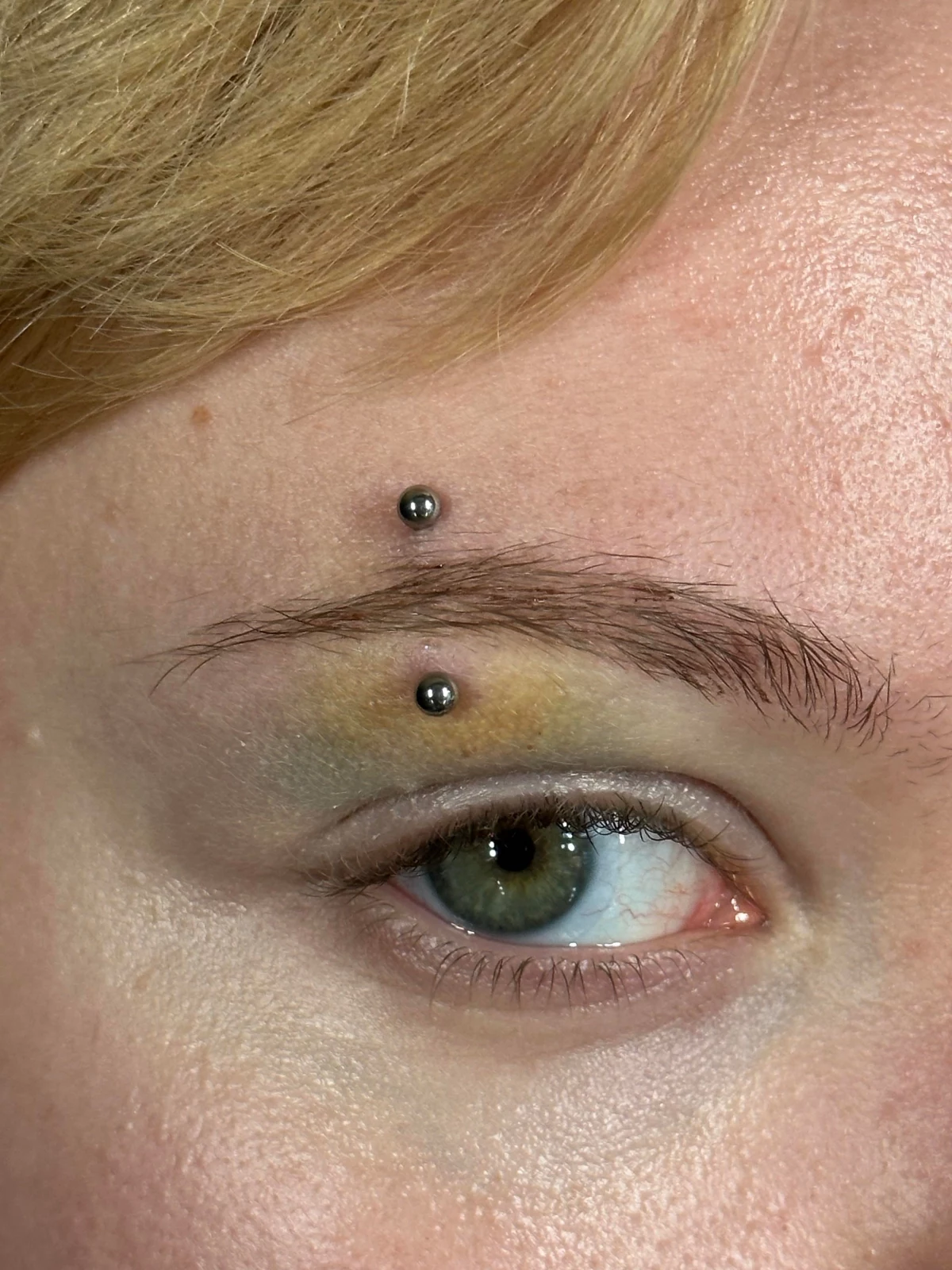
Why Your Anatomy Is a Big Deal
Before we even whisper the word “needle,” we have to talk about anatomy. Honestly, this is the most important part of my job. The ridge of your eyebrow isn’t just a simple strip of skin; it’s a pretty complex area with some important stuff running underneath.
The main thing we piercers are trained to avoid is the supraorbital neurovascular bundle. That’s a fancy term for a collection of nerves and blood vessels that gives feeling to your forehead. A piercing placed too deep or too far towards the center of your face could mess with these structures. While the risk of serious, permanent damage is low, a bad placement can definitely lead to a lot of extra bleeding, gnarly bruising, and discomfort. A good piercer will actually feel your brow ridge to map out the “safe zone.”
So, what am I looking for? Go look in a mirror. Gently pinch the tissue on the outer third of your eyebrow. That little ridge you can grab? That’s the sweet spot we’re looking for. It needs to be substantial enough to support the jewelry. If that tissue is too thin or sits too tight against the bone, the piercing has a huge chance of migrating (moving) or rejecting (being pushed out by your body). If someone has a very flat brow or super-tight skin, I’ll be upfront with them about the low chance of success.
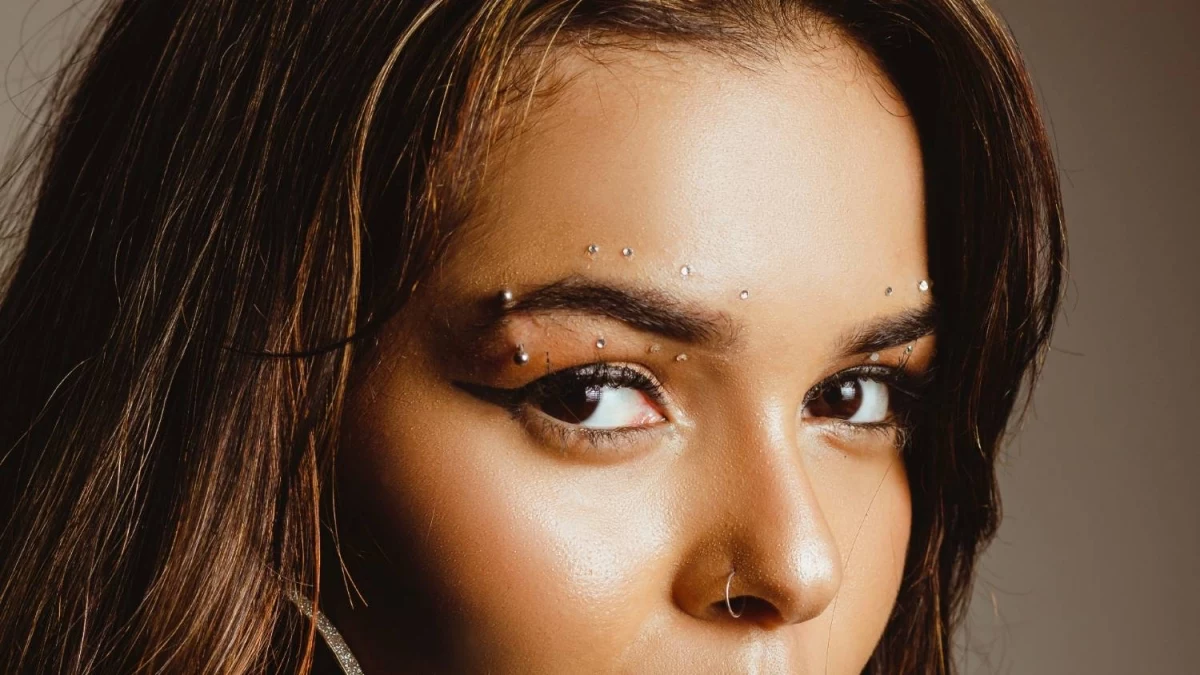
Standard placement is on the outer third of the brow, with a slight angle. This flows with the natural curve of the bone and, just as importantly, reduces the odds of it getting snagged on everything.
Not All Eyebrow Piercings Are Created Equal
The classic vertical piercing is by far the most popular, and for good reason. But people always ask about other setups, so let’s clear up the differences.
- Vertical Eyebrow Piercing: This is the one you see most often, going straight through the brow ridge. It has the best success rate because it creates a stable channel for the jewelry. For almost everyone, this is the one I recommend.
- Horizontal Eyebrow Piercing: Okay, this is a completely different beast. It’s a surface piercing, meaning it runs horizontally under a flat plane of skin instead of through a pinchable ridge. Heads up: these have a notoriously high rejection rate. Your body often sees the bar as a splinter and works hard to push it out. While they look cool at first, their lifespan is often short. They need special jewelry (a flat surface bar, not a curved one) and perfect aftercare to even stand a chance.
- Anti-Eyebrow Piercing: This is also a surface piercing, but it’s placed on the upper cheekbone, mirroring a standard brow piercing. Like the horizontal one, it’s very likely to migrate or reject. The skin here moves a ton when you make facial expressions, putting constant stress on the piercing. I’ve seen more of these fail than heal, often leaving a nasty scar. I generally advise against them unless someone truly understands and accepts the risk.
- Multiple Piercings: Getting two or more eyebrow piercings can look amazing, but it requires patience. I would never pierce the same eyebrow twice in one session. The swelling from the first piercing will distort the tissue, making it impossible to get the second one placed correctly. The pro move is to get one, let it heal completely (we’re talking several months), and then come back for the next one.

What to Expect at a Reputable Studio
A safe piercing is a sterile one, period. When you walk into a good studio, the process should feel clean and precise. Here’s the rundown of what should happen.
1. The Chat: We start by talking. I’ll ask about your job, your lifestyle, any health stuff. Then comes the consent form, which details the risks. It’s a legal requirement and just plain good practice.
2. Jewelry Selection: We pick the jewelry before anything else. For a new eyebrow piercing, you need a curved barbell made from implant-grade material. My studio, like most that follow the standards of the Association of Professional Piercers (APP), uses either implant-grade titanium (ASTM F136) or solid 14k/18k nickel-free gold. That initial barbell will also be longer to accommodate swelling. This is NON-NEGOTIABLE. A bar that’s too short can get swallowed by the swelling, and that’s a serious problem.
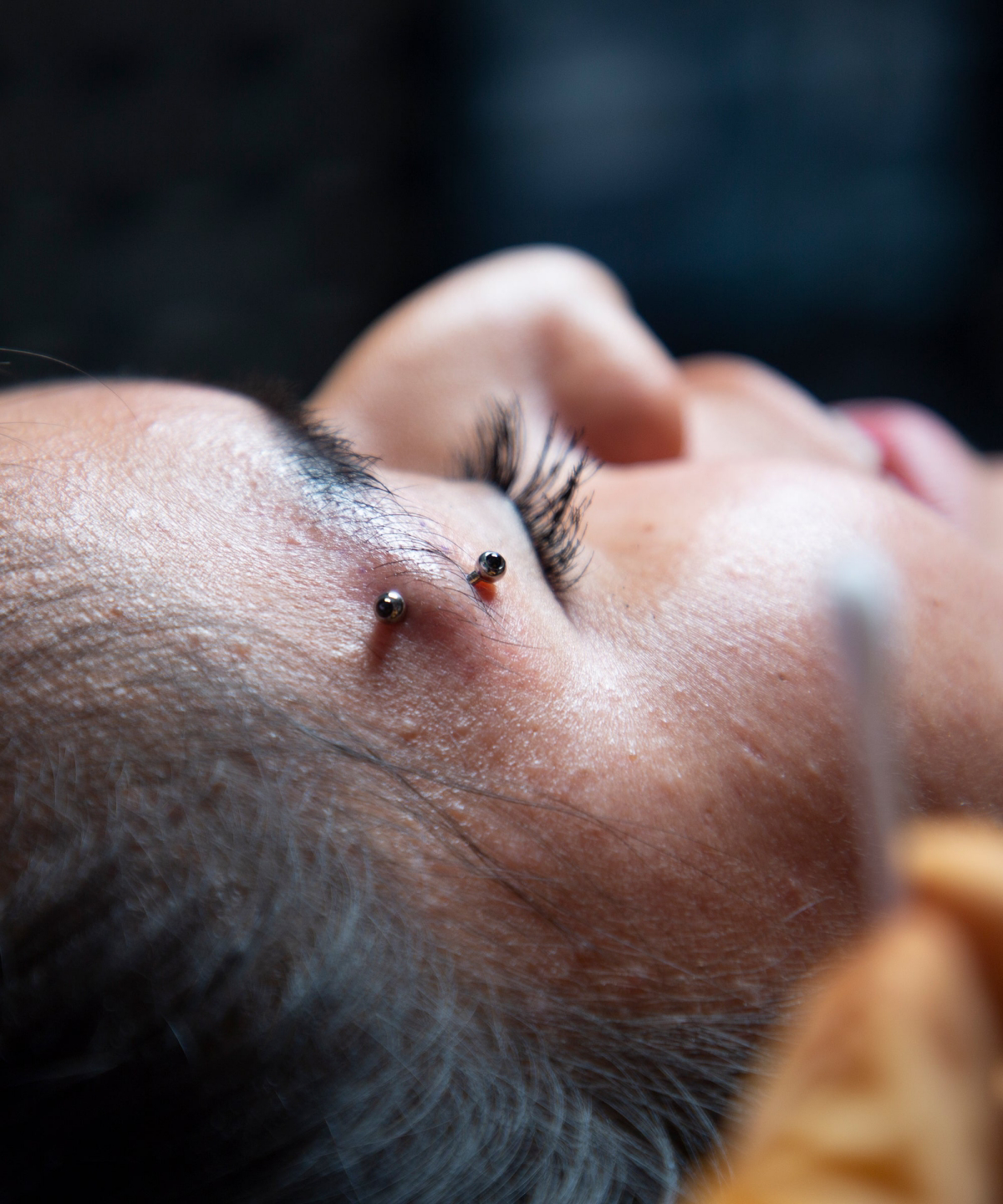
3. The Setup: All my tools—needles, clamps, gauze—and the jewelry itself are sterilized in an autoclave, which uses pressurized steam to kill every last germ. I’ll open the sterile packs right in front of you after washing my hands and putting on fresh gloves.
4. Cleaning & Marking: I’ll clean the area with a skin antiseptic. Then comes the art: marking the dots for entry and exit with a sterile, single-use marker. I’ll have you sit up, lie down, smile, and frown to see how the placement looks with different expressions. We don’t move forward until you’ve looked in a mirror and given it a 100% enthusiastic thumbs-up.
5. The Piercing Itself: Some piercers use forceps to hold the tissue, while others (like me) often prefer a freehand technique for eyebrows, which can be a bit gentler. The piercing is done with a brand-new, super-sharp, hollow needle. It’s over in a flash. You’ll feel a quick, intense pressure. And we NEVER, ever use piercing guns. They cause blunt force trauma and can’t be properly sterilized. Just don’t.
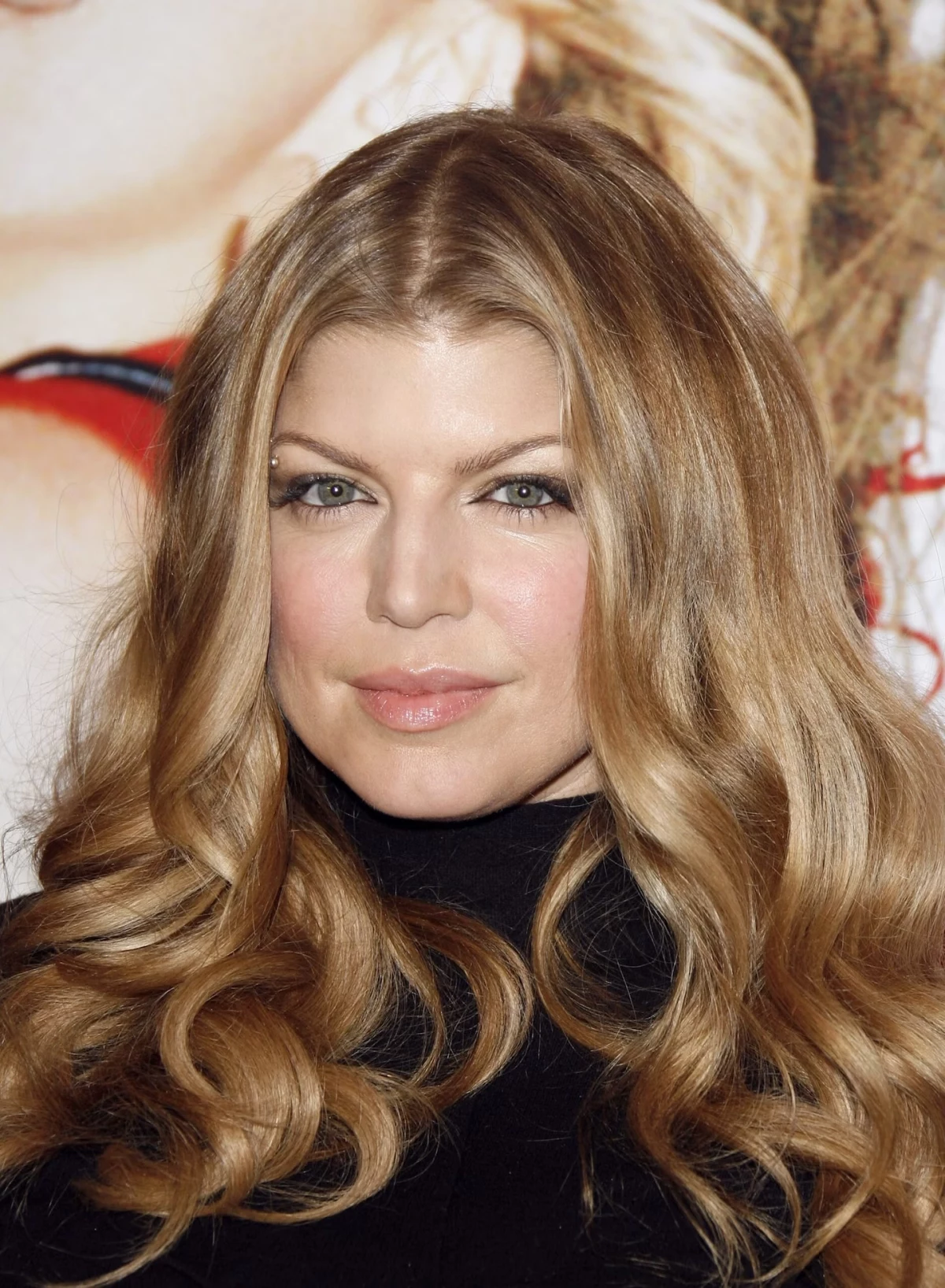
6. Jewelry Insertion: As the needle passes through, the jewelry follows right behind it in one smooth motion. It’s a slick little maneuver that minimizes trauma. After the top ball is screwed on, I’ll clean you up one last time, and you’re good to go!
Pain, Healing, and a Dose of Reality
Does it hurt? Yep. But it’s incredibly brief. Most people say it’s a sharp pinch that lasts about two seconds. The throbbing ache afterward is honestly more annoying than the piercing itself. A full healing journey takes longer than you’d think.
It usually takes about 3 to 4 months for an eyebrow piercing to be fully, robustly healed on the inside, and for some people, it can be closer to 6 months. It will look healed way sooner, which is where people get into trouble. Don’t get lazy!
The Best Aftercare Is Surprisingly Simple
Good news: the best aftercare is the easiest. We call it the LITHA method: Leave It The Hell Alone.
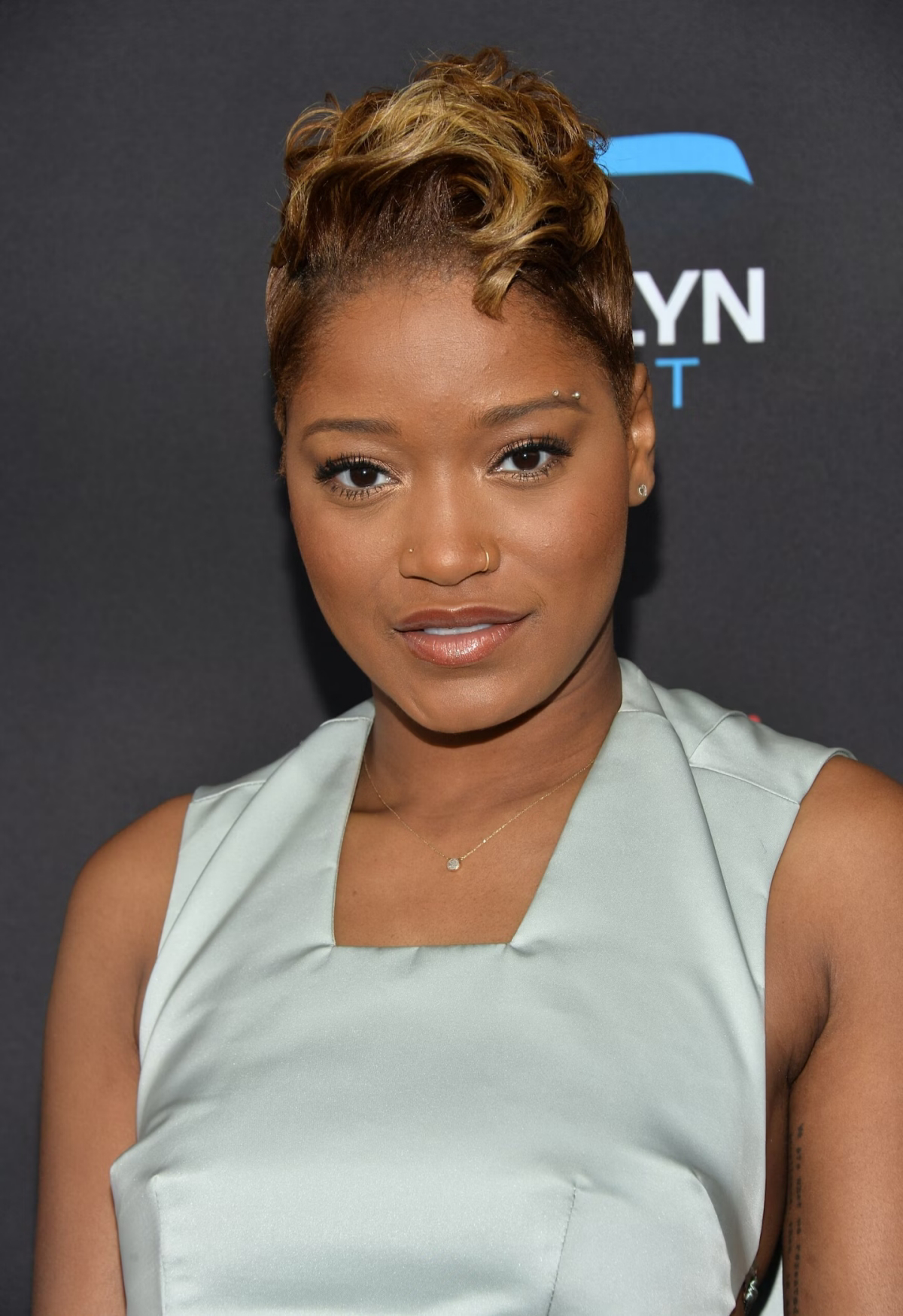
What to do:
- Sterile Saline Spray: This is your new best friend. You can buy a can of sterile saline wound wash at any pharmacy for about $5-$8. Lightly spray the piercing once or twice a day, let it sit for a minute, and then gently pat it dry with a clean paper towel. That’s it.
- Rinse in the Shower: Let warm water run over the piercing for a minute. This will soften and rinse away any of those normal healing “crusties” without you having to pick at them.
What NOT to do:
- Don’t touch it, twist it, or wiggle it. Your hands are germy, and all that movement just irritates the healing tissue.
- Don’t use harsh stuff like alcohol, hydrogen peroxide, or antibacterial soap. They’re way too aggressive and will just delay healing. Ointments are also a no-go, as they trap bacteria.
- Don’t pick the crusties! Let the shower do the work. Picking is like picking a scab—it reopens the wound.
- Avoid contamination. Try to keep a one-inch “no-fly zone” around the piercing, free of makeup, lotions, and hair spray for the first 8 weeks. And be SO careful with towels and shirts. A snag is the #1 enemy of a happy eyebrow piercing. I had one client who kept catching his new piercing on his towel. The fix? He started patting his face dry with disposable paper towels for a few months. Problem solved.
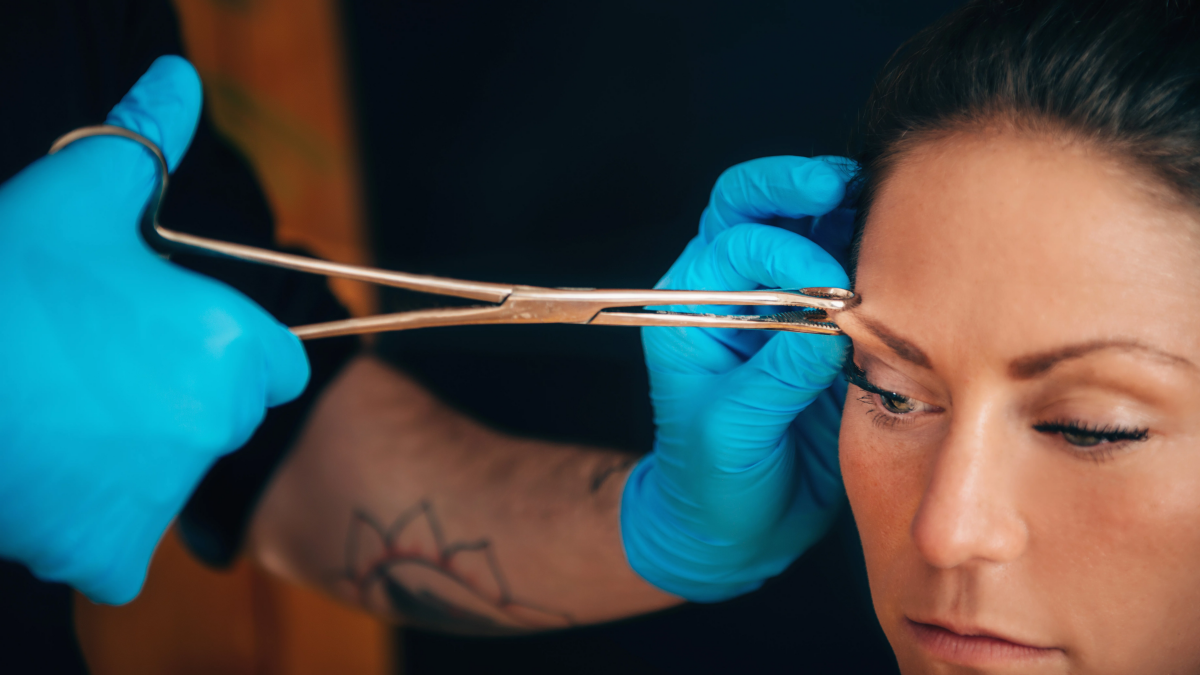
That All-Important Downsize Appointment
This is a step people often forget, but it’s critical. Around 4 to 8 weeks after your piercing, once the initial swelling is gone, you need to go back to your piercer to have a shorter barbell put in. That long initial bar will now be prone to snagging, which can cause irritation and even make the piercing heal crooked. Budget for this! A downsize service usually involves paying for the new, shorter top or bar, which can run anywhere from $20 to $40 for basic titanium.
Help! Is It Infected or Just Mad at Me?
It’s easy to panic at the first sign of trouble. But it’s important to know the difference between simple irritation and a real infection.
If it’s an Irritation Bump:
These are small, reddish bumps right next to the piercing hole. They are NOT an infection. They’re usually caused by snagging the jewelry, sleeping on it, or not downsizing your bar in time. The discharge, if any, will be clearish or slightly white. The area will be tender, but not intensely painful or hot.
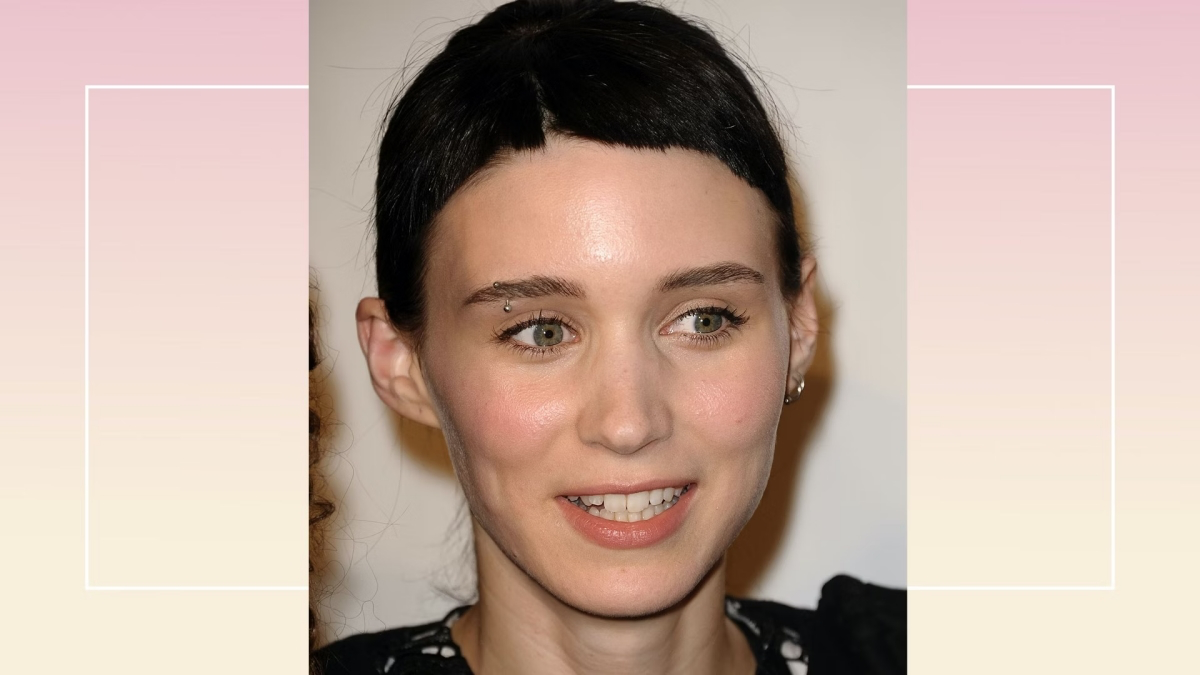
If it’s a Real Infection:
An infection is a whole other level. You’ll see thick, opaque, yellow or green pus. The entire area will be very red, swollen, and hot to the touch. You might even see red streaks spreading from the piercing. The pain will be significant and often gets worse. If you see these signs, DO NOT take the jewelry out—that can trap the infection inside. See a doctor right away for antibiotics.
Living With Your New Piercing: The Real-Life Stuff
Once it’s healed, it’s pretty low-maintenance, but here are a few things people always ask about:
- What about my glasses? If you wear glasses, tell your piercer! They can adjust the placement slightly higher or further out to make sure your frames don’t constantly bump the jewelry.
- How am I supposed to sleep? This is a big one. Try using a travel pillow (the U-shaped kind) and sleeping with your ear in the hole. This elevates the side of your face so your new piercing isn’t getting squished all night. It’s a game-changer.
- When can I wax my eyebrows? You need to wait until it is 100% healed, so give it a solid 3-4 months at least. Even then, make sure your aesthetician knows to avoid the immediate area completely. Tweezing carefully around it is a safer bet in the early months.
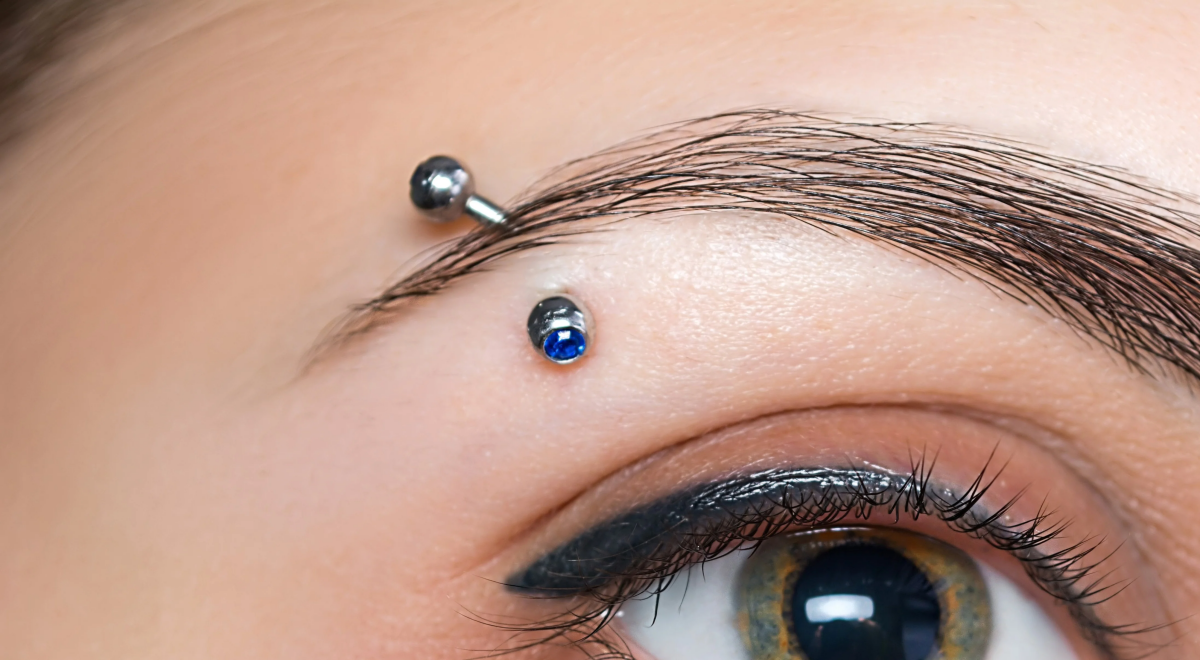
The Bottom Line: Cost and Finding a Pro
A good piercing is an investment in your body. You’re paying for a piercer’s expertise, sterile environment, and high-quality jewelry. A cheap piercing often ends up costing more in the long run. All in, expect to pay between $80 and $150 for the initial piercing service plus a basic, implant-grade titanium barbell. Don’t forget to budget that extra $20-$40 for your downsize appointment a month or two later!
To find a great piercer in your area, your best bet is to look up the Association of Professional Piercers online—their website (safepiercing.org) has a member locator. It’s a great starting point to find someone who prioritizes your health and safety.
At the end of the day, a great piercing is a partnership. I provide the clean procedure and the right advice, but once you walk out the door, its success is in your hands. Be patient, keep it clean, and you’ll have an awesome piercing you can enjoy for years.
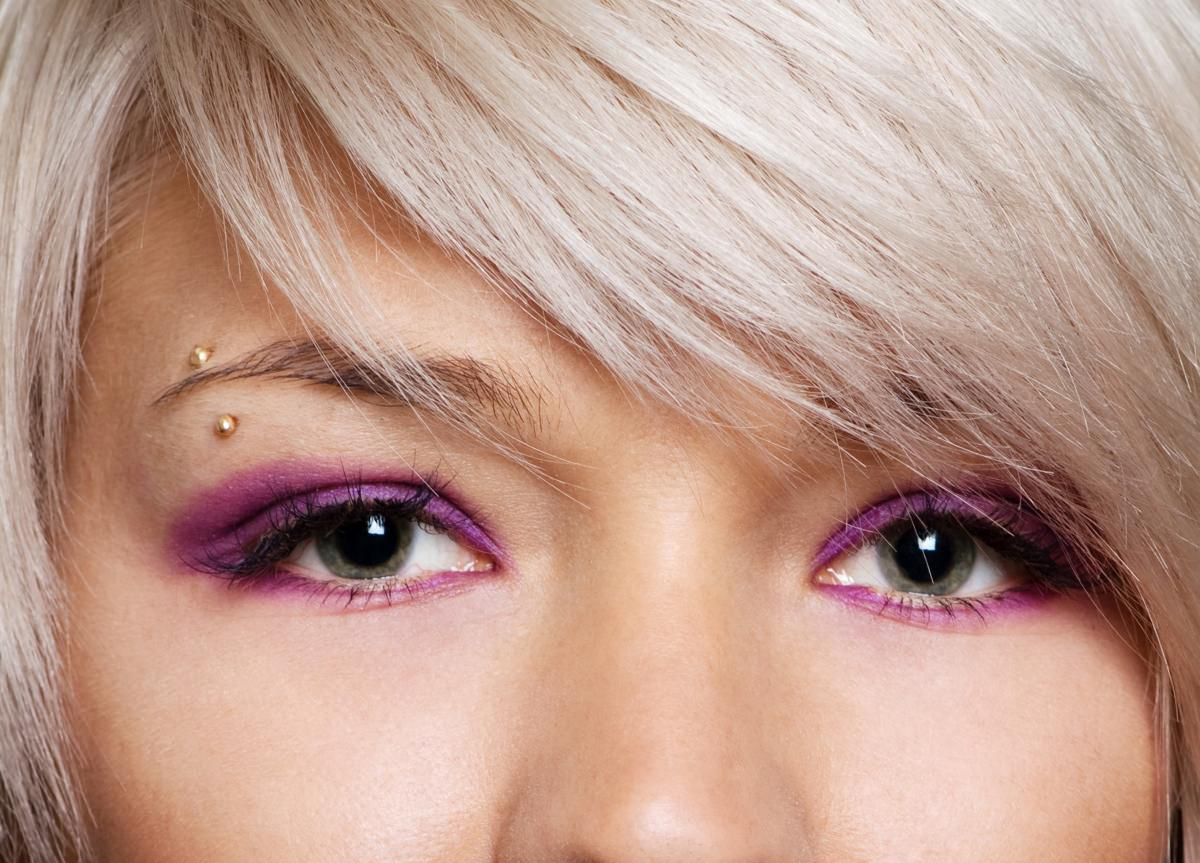
Galerie d’inspiration

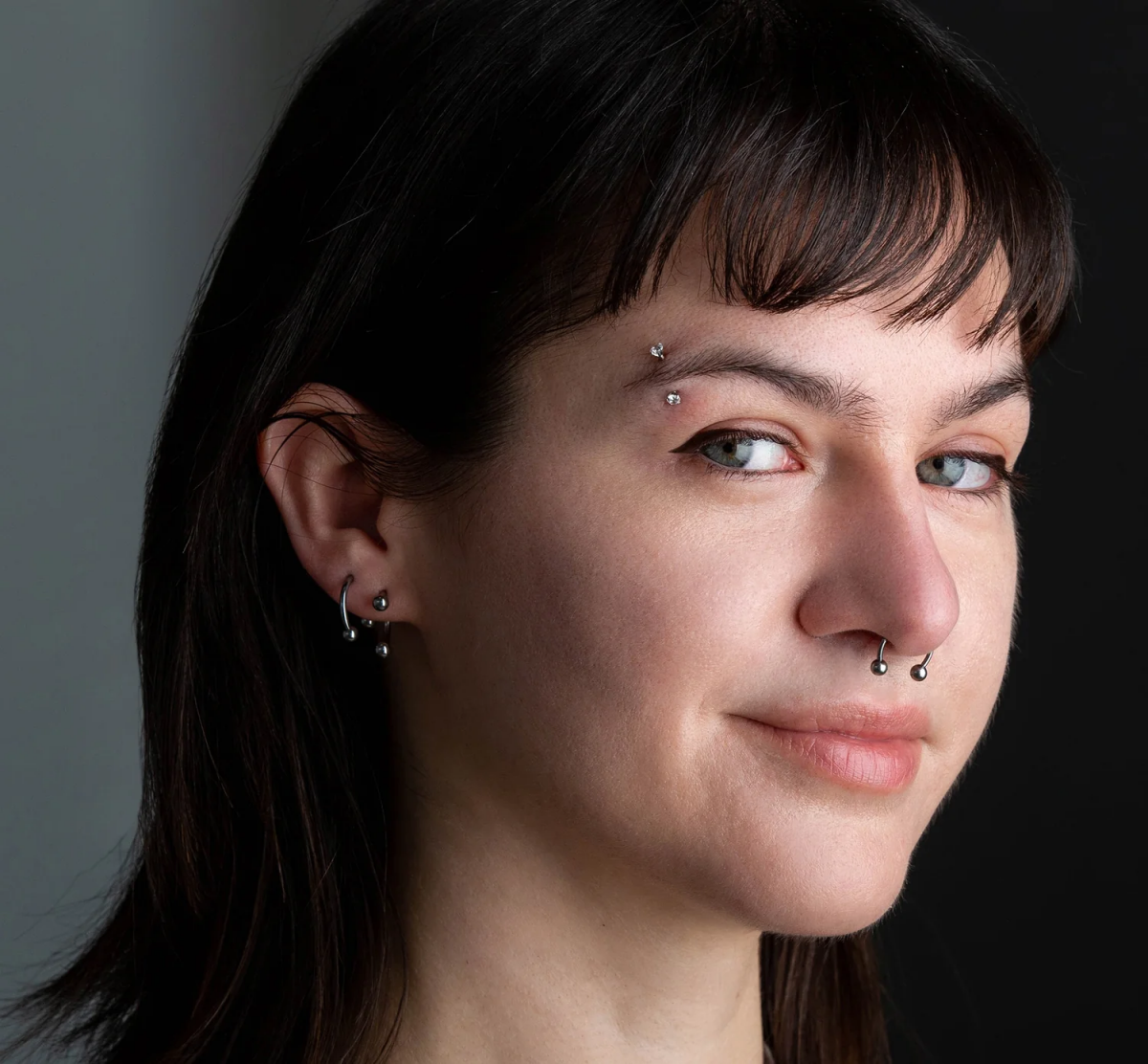
When can I change the jewelry?
Patience is key. While the initial swelling subsides in a few weeks, the internal tissue channel (the fistula) takes a full 3 to 4 months to truly heal and stabilize. Your piercer will likely recommend downsizing the initial, longer barbell to a snugger fit after about 4-6 weeks to prevent snagging. However, for a full jewelry change just for style, it’s best to wait until the 4-month mark to avoid irritating a still-delicate piercing.
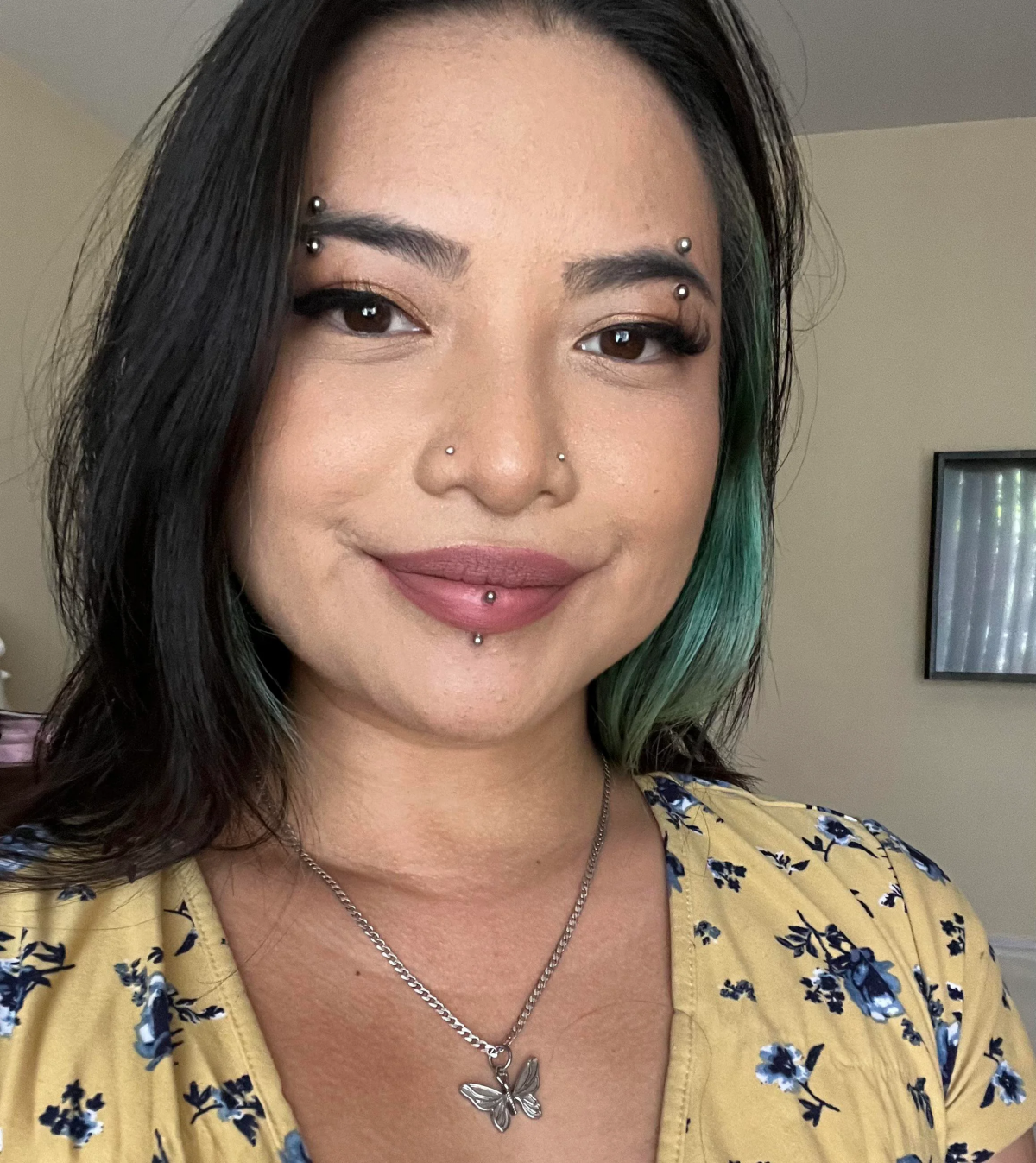
The Association of Professional Piercers (APP) only recommends specific materials for initial piercings, with implant-grade titanium (ASTM F-136) being the gold standard.
This isn’t just jargon. Unlike ‘surgical steel,’ which can contain nickel and cause reactions, implant-grade titanium is highly biocompatible and nickel-free, minimizing the risk of irritation and promoting faster, cleaner healing. When choosing a studio, asking if they use implant-grade titanium for initial piercings is a great indicator of their commitment to safety.
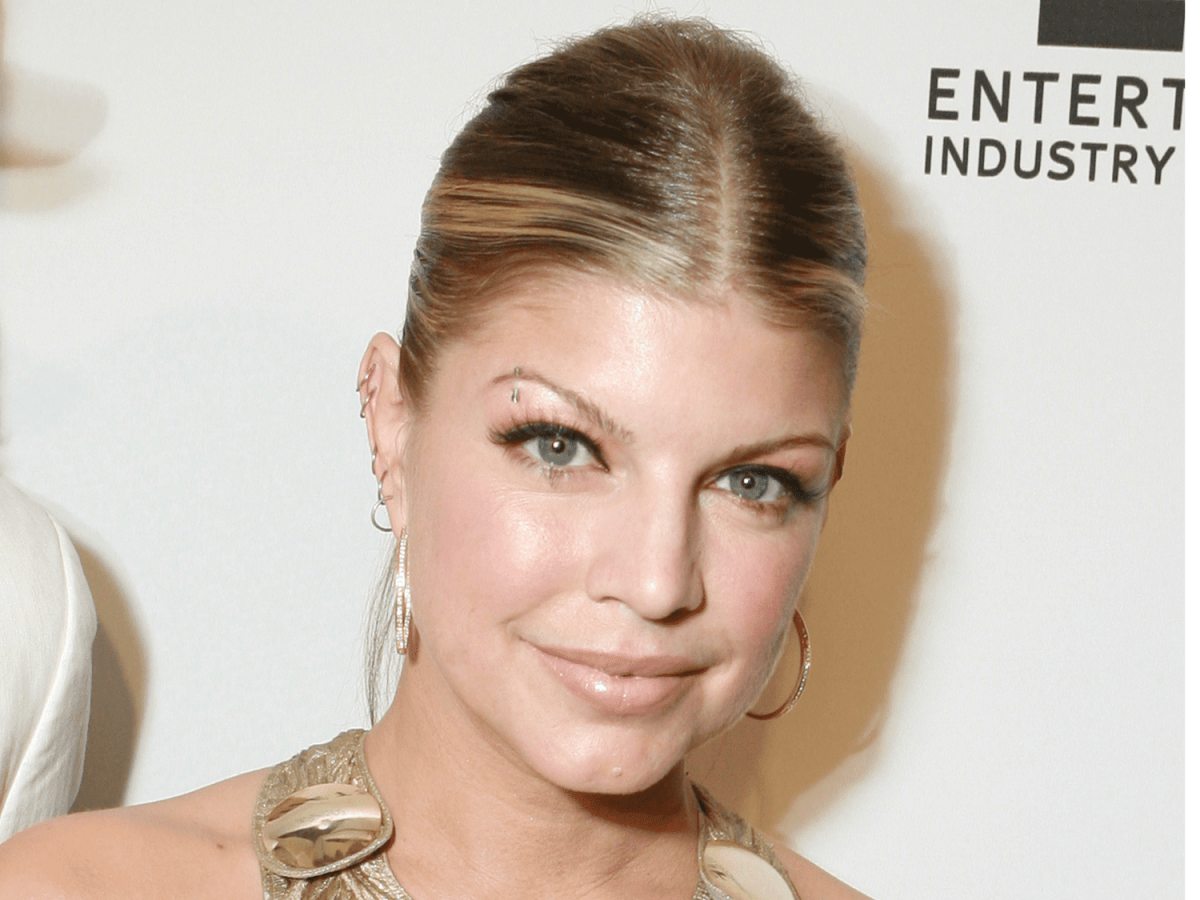
A happy piercing is an undisturbed one. During the healing phase, be mindful of things that can cause friction or pressure. The biggest culprits are:
- Sleeping on the side of the piercing.
- Wearing glasses with thick arms that press on the jewelry.
- Aggressive face washing or applying makeup too close to the entry/exit holes.
- Hats, headbands, or fringe/bangs that constantly brush against it.
Curved Barbell: This is the standard and most appropriate jewelry for an eyebrow piercing. Its shape follows the natural curve of the brow ridge, reducing pressure on the tissue and lowering the chances of migration or rejection.
Straight Barbell: While used in other piercings, a straight barbell is unsuitable for an eyebrow. It creates constant tension on the entry and exit points, almost guaranteeing it will be pushed out by your body over time. If a piercer suggests a straight bar, it’s a major red flag.










